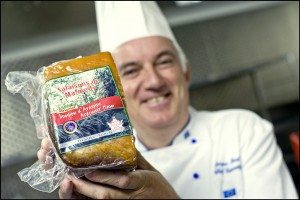General Requirements of Food Labelling applicable to all products
The FSS Packaging and Labelling,
Regulations intends, when a consumer buys any food product in
pre-packaged containers, he gets all the necessary information about the
food product on the label affixed on the container, so that the
consumer can make his choice to buy it or not to buy it.
The information on the label should be
clear, visible and in simple and understandable language to the
consumer. To ensure that the labelling is not done just for compliance
of the Regulations, but it actually serves its purpose to provide the
necessary and correct information to the consumer, the Regulations
prescribe the general requirement of labelling and manner of declaration
on the labels to be followed by the concerned Food Business Operators.
2.1 General Requirements of Food Labelling
- Every pre-packaged food shall carry a label containing the required information. The particulars of declaration on the label shall be in English or Hindi in Devanagari script.
- The use of any other language in addition to English and Hindi languages is also allowed.
- Pre-packaged food shall not be labelled in a manner that is false, misleading or deceptive or is likely to create an erroneous impression regarding its character in any respect.
- The Label in pre-packaged foods shall be applied in such a manner that they will not become separated from the container during transportage or other wise.
- Contents on the label shall be clear, prominent, indelible and readily legible by the consumer under normal conditions of purchase and use.
- Where wrapper covers the container, the wrapper shall carry the necessary information or the label on the container shall be readily legible through the outer wrapper.
-
As per the latest amendment, the license number has to be displayed on the principal display panel.
Manner of declaration:
1. Any information or
pictorial device written, printed, or graphic matter may be displayed in
the label, only if it is not in conflict with the requirements of these
Regulations.
2. Every declaration, which is required to be made on package, shall be:
(i) definite, plain and unambiguous
(ii) the font size of the letters should be appropriate and in colour contrast with the background of the label.
3. No declaration shall be made so as to require it to be read through any liquid commodity contained in the package.(ii) the font size of the letters should be appropriate and in colour contrast with the background of the label.
4. Labels should not to
contain false or misleading statements: A label should not contain any
statement, claim, design, device, fancy name or abbreviation which is
false or misleading in any particular concerning the food contained in
the package, or concerning the quantity or the nutritive value or in
relation to the place of origin of the said food:
The established trade or fancy names of
confectionery, biscuits and sweets, such as, barley, sugar, bull’s eye,
cream cracker or aerated waters, such as, Ginger Beer or Gold-Spot or
any other name in existence under the international trade practice are
exempted from this clause.
5. The information
required shall be given on the principal display panel /label of the
package or container and such information may be grouped together and
given at one place.
6.Area of the principal display panel or size of the label should be in proportion to the size of the packaging or the container.
(a) In the case of a
rectangular container ,the area of principal display panel or the size
of label shall not be less than forty percent of the product of height
and width of the container.
(b) In case of cylindrical or , round or , oval or nearly oval container, , the area of principal display panel/ label shall not be less than twenty percent of the product of the height and average circumference of such container; or
(c) In the case of container of any other shape, it shall be not less than twenty percent of the total surface area of the container
(b) In case of cylindrical or , round or , oval or nearly oval container, , the area of principal display panel/ label shall not be less than twenty percent of the product of the height and average circumference of such container; or
(c) In the case of container of any other shape, it shall be not less than twenty percent of the total surface area of the container
7. The letters and
numerals used in the label declaration should be of proper height and
width in accordance to the size of the packaging. The minimum size of
the letter prescribed for the smallest size of packaging of up to 50 g
or 50 ml. is, height-1 mm. and minimum width 0.33 mm.
Overall purpose of this study is to make
sure the information provided on the food label can easily be read and
it is not too small to be properly recognized. No false or misleading
claims are to be mentioned on the label.



